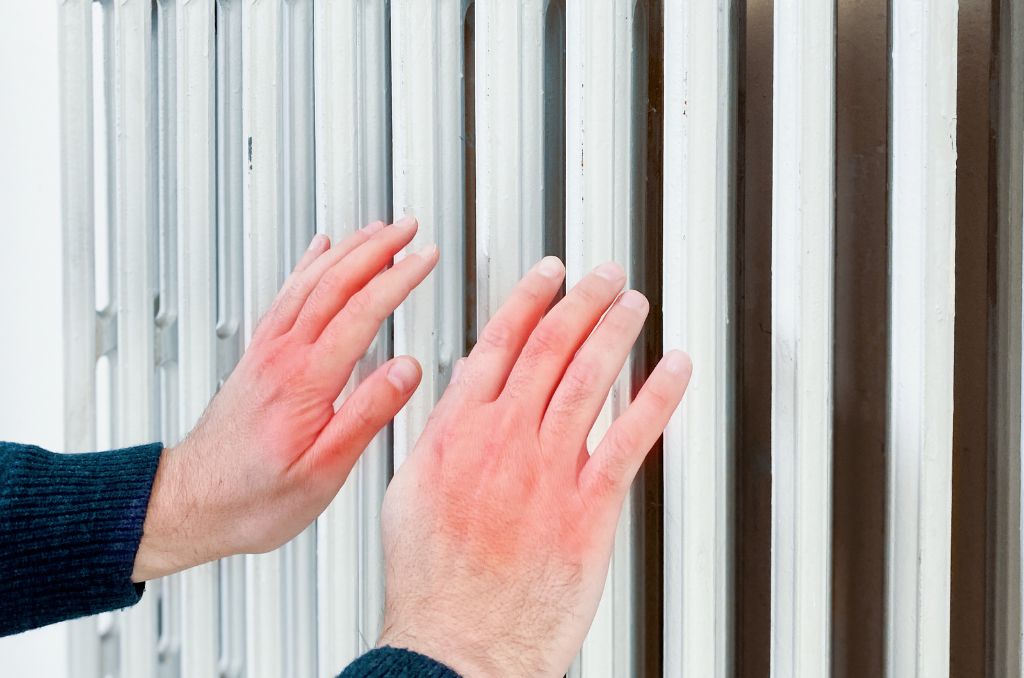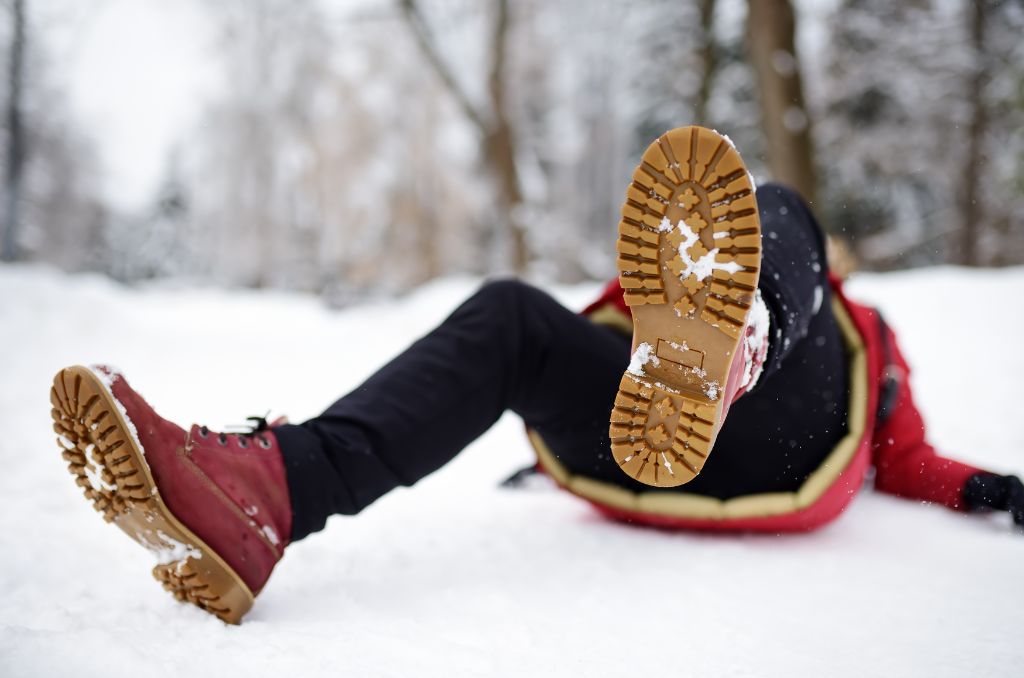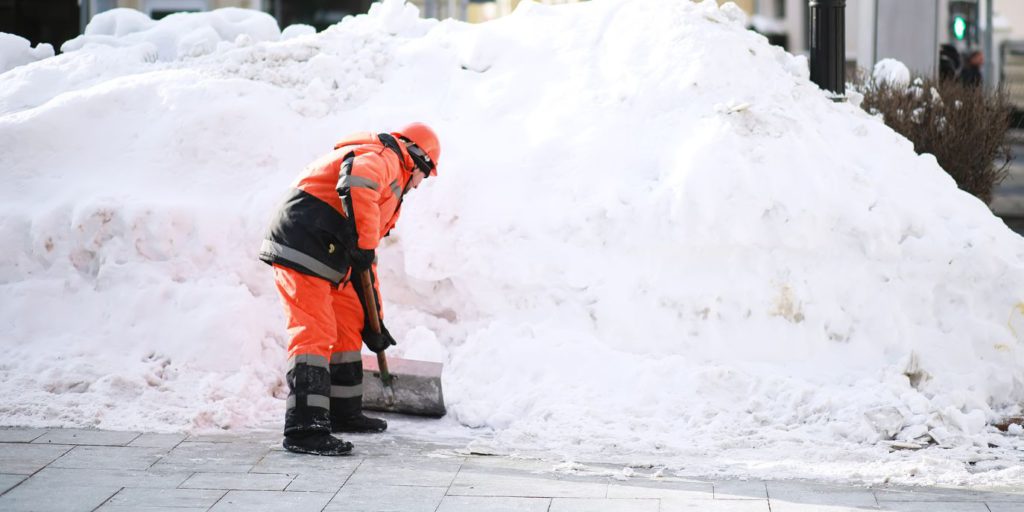As the chill of winter winds, snow, and ice creep in, they bring different challenges for those exposed to the elements as part of their daily work routine. In 2020, 22 occupational fatalities were attributed to ice, sleet, and snow. So, taking safety precautions is necessary for those in professions where working outdoors is unavoidable.
Winter-related health conditions and accidents occur more than we realize. In fact, according to statistics from 2017, there were over 20,000 occupational injuries related to ice, snow, and sleet. Individuals most at risk for sustaining winter weather-related injuries are those working in the following professions:
- Construction
- Maintenance
- Snow removal
- Emergency response
- Utility work
- Road rescue
Let’s review some of the most common winter weather-related occupational injuries:
What is cold stress?

Cold stress happens when someone’s body can no longer maintain a normal temperature. Those who work in outside environments during the winter season are at a higher risk of developing cold stress, which can cause long-term tissue damage or, in extreme cases, death.
According to OSHA, “What constitutes cold stress and its effects can vary across different areas of the country. In regions not used to winter weather, near freezing temperatures are considered factors for “cold stress.”
Changes in body temperature can also cause cold stress due to increased wind speeds, dampness or wetness, and even body sweat, all of which cause the body to discard heat quickly.
Types of Cold Stress
Cold stress can manifest as different medical conditions. Here is a brief overview:
Frostbite: Frostbite is a condition where freezing of skin and tissue occurs. If severe enough, frostbite can cause permanent damage and/or require amputation.
Symptoms include red skin that develops white or gray patches in the fingers, toes, ear lobes, or nose; aching, tingling, numbness, and hard blisters can all occur in plagued areas.
To treat frostbite, the affected person should seek a warm area immediately, avoid walking or putting pressure on the frostbitten site, wrap the area in a dry cloth until they can seek medical care, avoid rubbing or trying to re-warm the area (do not use heating pads or anything similar).
Trench Foot: According to OSHA, Trench Foot is “a non-freezing injury of the feet caused by prolonged exposure to wet and cold conditions. It can occur in temperatures as high as 60°F if feet are constantly wet. Injury occurs because wet feet lose heat 25 times faster than dry feet.”
Symptoms include numbness, redness, pain, tingling, swelling, blisters, leg cramps, Gangrene, and bleeding under the skin.
To treat Trench Foot, seek medical attention as soon as possible or call 911 in the event of a severe medical emergency. Those with Trench Foot should remove wet socks, shoes, or boots immediately, dry their feet, elevate them, and avoid working on them until medical attention is given.
Hypothermia: Hypothermia is a condition that occurs when someone’s body temperature drops below 95 degrees. Hypothermia occurs most frequently in cold weather but can also happen at mild/chill temperatures if someone is wet or in cold water.
Symptoms of hypothermia can include uncontrollable shivering and chills, confusion, slurred speech, loss of coordination, slow breathing or slow heart rate, unconsciousness, or even death.
To treat hypothermia, one should call 911 immediately, move to a warm room or area, remove wet clothing and dry off, wrap the entire body in blankets and layers, drink warm sweet drinks to increase body temp, place warm packs in armpits, groin area, and sides of the chest.
Chilblains: Chilblains happens when small blood vessels in the skin become inflamed. This can be caused by repeated exposure to cold temperatures.
Symptoms of Chilblains include redness, itching, inflammation, blistering, and ulceration (in severe cases).
To treat Chilblains, someone would want to warm the skin area that’s being affected, keep blisters and ulcers covered, avoid scratching or picking at the affected area, and use steroid creams as needed.
Preventing Cold Stress
According to the OSH Act of 1970, “employers have a duty to protect workers from recognized hazards, including cold stress hazards, that are causing or likely to cause death or serious physical harm in the workplace.”
Proper training is one of the best ways to keep employees safe in harsh winter conditions. Training should include the following:
- Recognizing potential cold stress hazards in the workplace and in the environment
- Cold stress symptoms
- What to do to help those with cold stress
- How to choose proper attire for winter weather temperatures
Aside from providing proper training, there are certain things employers should do to help protect their workers. Here are some important things that employers should do or provide:
- Plan scheduled breaks in warm, dry areas
- Pay attention to employees’ physical conditions
- Schedule work hours to coincide with the warmest parts of the day
- Provide warm/sweet drinks
- Schedule employees to work in pairs
- Allow workers to snack
- Provide things like portable heaters when possible
For more information, check out this helpful guide from OSHA.
Winter Weather Occupational Accidents

Winter weather-related work accidents can happen for a variety of reasons, but here are some common issues that can contribute to workplace injuries:
- Slips and falls- slips and falls are some of the most seen workplace injuries, even without factoring in hazardous weather conditions. Factoring in slippery conditions like ice, snow, and sleet, you can imagine why falls are at the top of the list.
- Lower back injuries- lower back injuries happen pretty frequently in the winter due to employees shoveling snow.
- Falling ice- another way work-related injuries happen in the winter is from falling ice and snow that hits employees.
- Work-related auto accidents- when roads are icy and slippery, there is an increased risk for accidents.
Prevention Steps
Taking extra time and following basic prevention steps can help significantly reduce the risk of work-related winter weather accidents. Here are some basic things to take into consideration:
- Wear appropriate clothing- whether you are working outside or in an office, ensuring that you are equipped with the proper attire can help prevent accidents- like slips or falls on icy surfaces. Always choose waterproof boots with appropriate tread or “outsole.” Dress in layers to stay warm, and ensure you don’t forget your hat and gloves.
- Don’t lift heavy snow- if you are in charge of shoveling or plowing, exercise caution to avoid lower back injuries, even if you must shovel smaller amounts at a time. Also, take frequent breaks to avoid overexertion.
- Be careful with snow removal- often, snow or ice must be removed from the roof of a business or facility. Ensure you do not clear snow or ice from elevated surfaces until no workers or pedestrians are below.
- Be road ready- whether you drive to the office or for your business or job, ensuring your car is adequately equipped for icy weather conditions is crucial.
Important Winter Weather Terms to Know
Familiarizing yourself with the different winter weather terminology is essential if you are an employer in charge of those working in the elements. Knowing what each term means can help you make informed decisions impacting those exposed to cold winter temperatures. Remember that some of these terms vary from state to state or region.
Blizzard Warning
A blizzard warning means that heavy snow or ice that impacts visibility is expected or occurring.
Wind Chill Watch
Wind chill watches are issued when extremely cold wind chill temperatures are possible.
Wind Chill Warning
Wind chill warnings happen when extremely cold wind chill temperatures are occurring or expected.
Winter Storm Watch
A winter storm watch happens when hazardous winter weather is possible.
Winter Storm Warning
A winter storm warning is issued when hazardous winter weather is occurring or expected.
Winter Weather Advisories
A winter weather advisory happens when any amount of freezing rain, or 2 to 4 inches of snow, is expected to cause issues but still not severe enough to issue a warning.
In the face of winter’s harsh and unpredictable conditions, the importance of safety for those in outdoor professions cannot be overstated. The statistics tell an honest story, with numerous occupational injuries and health conditions, like cold stress, being caused by exposure to environmental hazards. Employers should do all they can to provide training and prevention for their employees so that everyone can have a healthy and productive winter work season.

